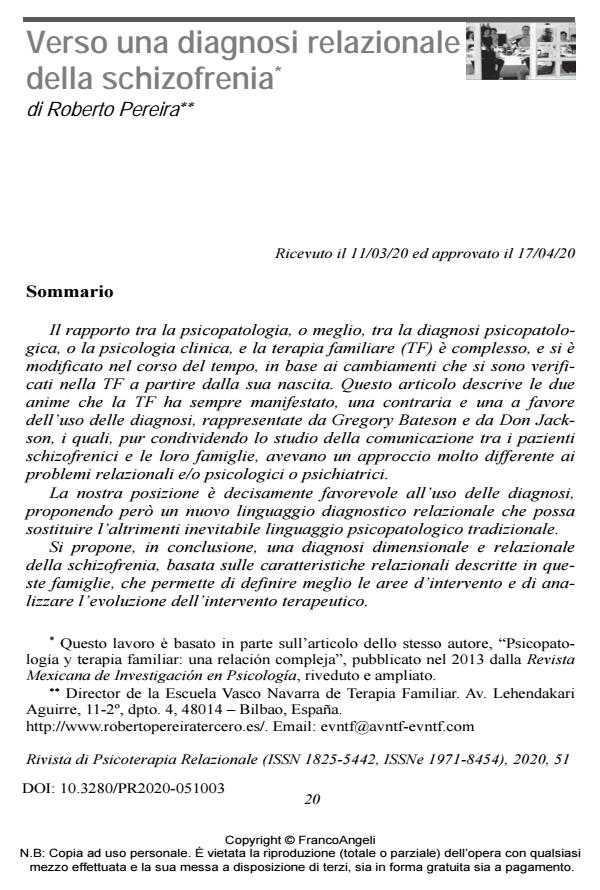Towards a Relational Diagnosis of Schizophrenia
Journal title RIVISTA DI PSICOTERAPIA RELAZIONALE
Author/s Roberto Pereira
Publishing Year 2020 Issue 2020/51
Language Italian Pages 20 P. 20-39 File size 297 KB
DOI 10.3280/PR2020-051003
DOI is like a bar code for intellectual property: to have more infomation
click here
Below, you can see the article first page
If you want to buy this article in PDF format, you can do it, following the instructions to buy download credits

FrancoAngeli is member of Publishers International Linking Association, Inc (PILA), a not-for-profit association which run the CrossRef service enabling links to and from online scholarly content.
The relationship between psychopathology or, more accurately, psychopathological diagnosis or clinical psychology and Family Ther-apy (FT) is complex, but it has evolved and has been modified as a re-flection of the changes that FT has registered since its creation. The paper describes the two souls that FT has always had. Its stance in fa-vour or against the use of medical diagnostic methods is best repre-sented by Don Jackson and by Gregory Bateson. They were colleagues in the study of communication between schizophrenic patients and their families, however, both with a fairly different point of view on how to manage the relational and/or psychological and psychiatric disorders. Our proposal reveals an obvious tendency towards the diagnostic method, but suggesting a new relational diagnosis orientated language to elude the otherwise unavoidable use of traditional psychopathologic language. Finally, a relational dimensional diagnosis of Schizophrenia is proposed, based on the relational characteristics described in these families, which allows to better define the intervention areas and to analyse the evolution of the therapeutic intervention.
Keywords: Psychopathology, diagnosis, family therapy, relational diagnosis, schizophrenic family.
Roberto Pereira, Verso una diagnosi relazionale della schizofrenia in "RIVISTA DI PSICOTERAPIA RELAZIONALE " 51/2020, pp 20-39, DOI: 10.3280/PR2020-051003